How to Plant a Three Sisters Garden

The crops of corn, beans, and squash are known as the Three Sisters, an agricultural method of the indigenous peoples of Turtle Island (North America). For centuries these three crops have been the center of Native American traditions. It is one of North America’s oldest forms of companion planting where each plant provides a service. Corn is the leader and supplies a strong, tall structure for beans. Beans are the givers that provide nitrogen for the other plants. Squash is the protector with its big leaves that shade the soil and deter pests. The traditional three sisters garden is planted without tilling or plowing on small mounds that are fertilized with fish.
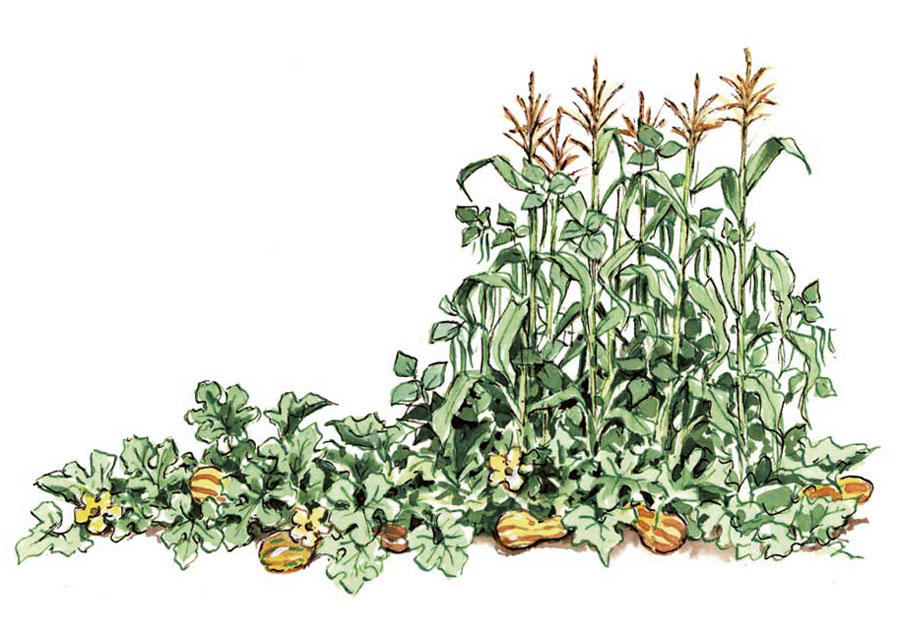
Illustration by George Kuepper.
The term “Three Sisters” emerged from the Iroquois creation myth. It was said that the earth began when “Sky Woman” who lived in the upper world peered through a hole in the sky and fell through to an endless sea. The animals saw her coming, so they took the soil from the bottom of the sea and spread it onto the back of a giant turtle to provide a safe place for her to land. This “Turtle Island” is now what we call North America. Sky woman had become pregnant before she fell. When she landed, she gave birth to a daughter. When the daughter grew into a young woman, she also became pregnant (by the West wind). She died while giving birth to twin boys. Sky Woman buried her daughter in the “new earth.” From her grave grew three sacred plants—corn, beans, and squash. These plants provided food for her sons, and later, for all of humanity. These special gifts ensured the survival of the Iroquois people.
Diana Erney, 1996, “Long Live The Three Sisters”
Many tribes believe the Great Spirit handed corn, beans, and squash down to the people as special gifts assuring survival. The three crops were considered to be protected by the spirits of the Three Sisters, collectively called the De-o-ha-ko, meaning “our sustainers” or those who support us.
Before humans began practicing agriculture about 12,000 years ago, beans, squash, and teosinte (a Mexican grass considered to be one of the parent plants of modern corn) grew together in the wild near Oaxaca, Mexico. Over the span of 5,000 years as indigenous people transitioned from a hunter-gatherer culture to an agricultural culture they slowly abandoned their nomadic lifestyle and domesticated these wild plants for a more stable food supply.
Affiliate Disclaimer
This website is supported by its audience and contains affiliate links. An affiliate link means I may earn advertising or referral fees at no extra cost to you if you make a purchase through these links. (read more)
Corn, beans, and squash that grow together create a polyculture because of their biological diversity. Each plant utilizes different nutrients in the soil and then returns those nutrients to the soil as they decompose. These three crops have root systems that vary in size and depth, which helps to break up the soil. Because each crop is a different height, they’re each able to capture available light from various angles. Diversity also provides protection from devastation. One pest or disease won’t wipe out an entire field making some sort of harvest nearly guaranteed.
Corn
Teosinte is the likely wild progenitor of corn. About 9,000 years ago, the Mayan people turned this impenetrable 12-kernel seed-headed grass into an edible and adaptable crop.
A three sisters garden is basically three stacks of plants that fill a designated space. The upright element is traditionally corn, but sunflowers or amaranth are alternatives. Corn should be planted in late May when the ground has warmed, chances of frost have passed, and nighttime temperatures reach 55°F. Plant 2-3 seeds a foot apart in rows 2-3 feet wide.
Haudenosaunee tradition holds that planting begins when the leaves of a dogwood are the size of a squirrel’s ear. It’s important that corn is planted 2-3 weeks before beans.
Beans
Historically, beans enter the picture a little later sometime after 1000 a.d. Ethnobiologists believe that beans were adopted by Native American tribes long after they became familiar with corn and squash. Traditionally, the beans in a three sisters garden were the kind meant to be dried and stored for later use, but any “pole” bean (vine-type) variety will work. Modern “bush” beans are incapable of climbing cornstalks.
Pole beans should be planted when corn is about 6″ to a foot tall because they will explode with growth. Plant 2-3 seeds about 4″ from the corn stalk. As they climb, the corn will provide support for the beans and in return, the beans will help strengthen each corn grouping from strong winds by weaving and connecting them together as they grow. Legumes enhance the availability of a key nutrient in the soil – nitrogen. They help make nitrogen available by cultivating beneficial bacteria, Rhizobia, that pull nitrogen from the air and convert it to a form that plants can use. This process is called nitrogen fixation. After the bean plant dies, all the fixed nitrogen stored inside becomes available to other plants. Leave these bean plants as mulch or mix them into the soil after the harvest is over so they can give next season’s crops a great nitrogen boost!
Squash
Squash was actually the first of the trio to be domesticated, about 10,000 years ago. It was originally grown for its hard rind that made great bowls and utensils. The flesh was bitter, but indigenous people eventually bred squash for better flavor and texture.
While the pole beans are being planted squash can also be planted around the corn stalks. The squash must be a winter variety – butternut, acorn, etc – because summer squash grows in single clumps rather than as spreading ground cover. Melons and pumpkins would work for this layer too. Because these plants spread they create a living mulch that keeps the soil temperature regulated, retains moisture, and suppresses weeds. The prickly hairs on the leaves also help reduce predation in the garden from rodents and other pests. Be sure to step carefully in the garden because the beans and corn will mature first. Harvest the squash as they ripen.
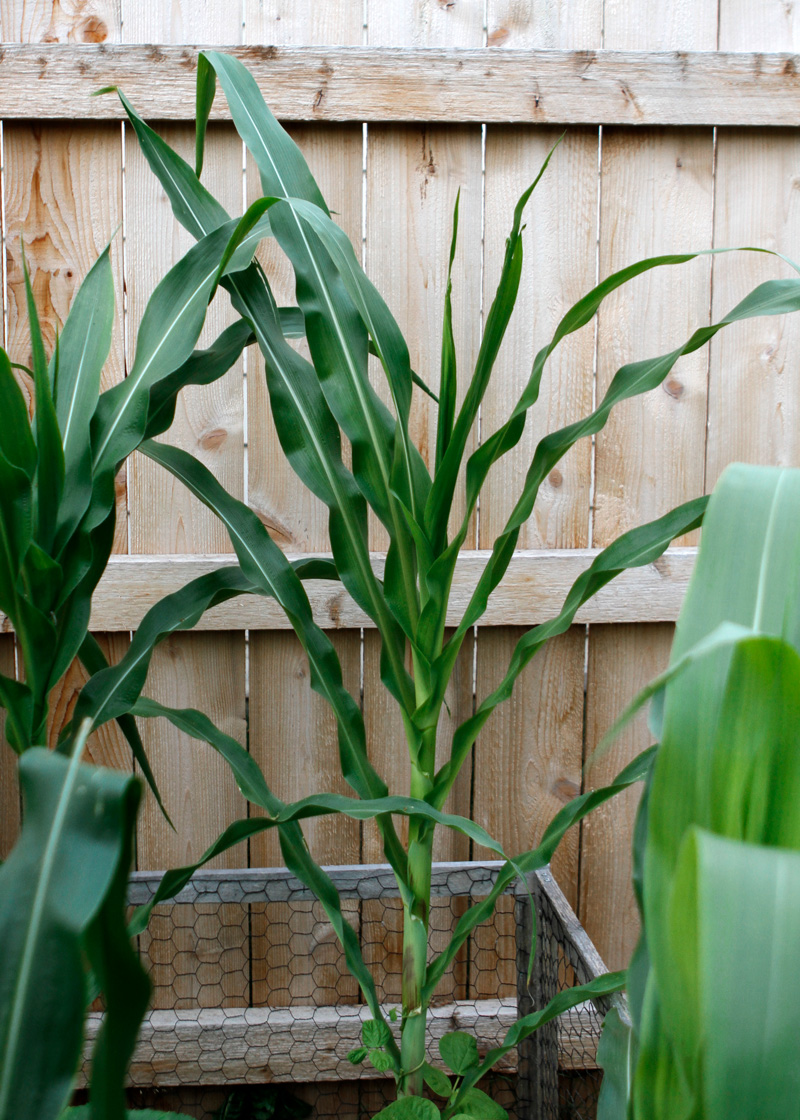
tall corn stalks
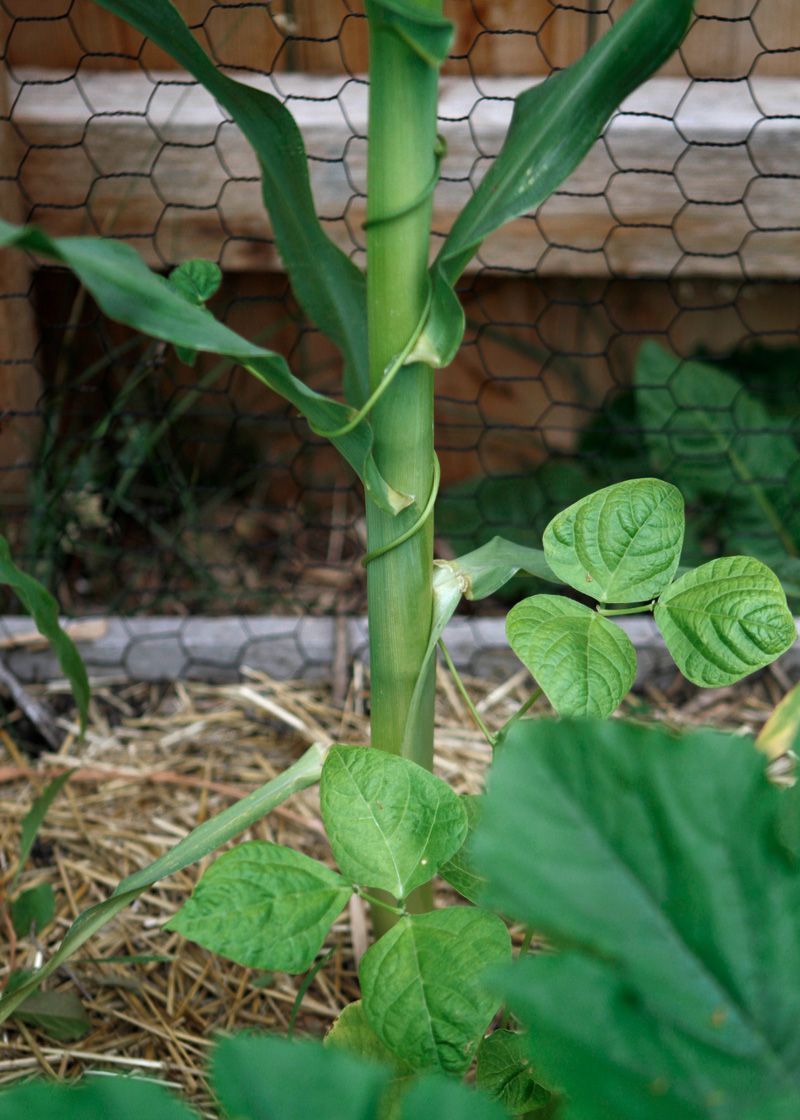
climbing pole beans
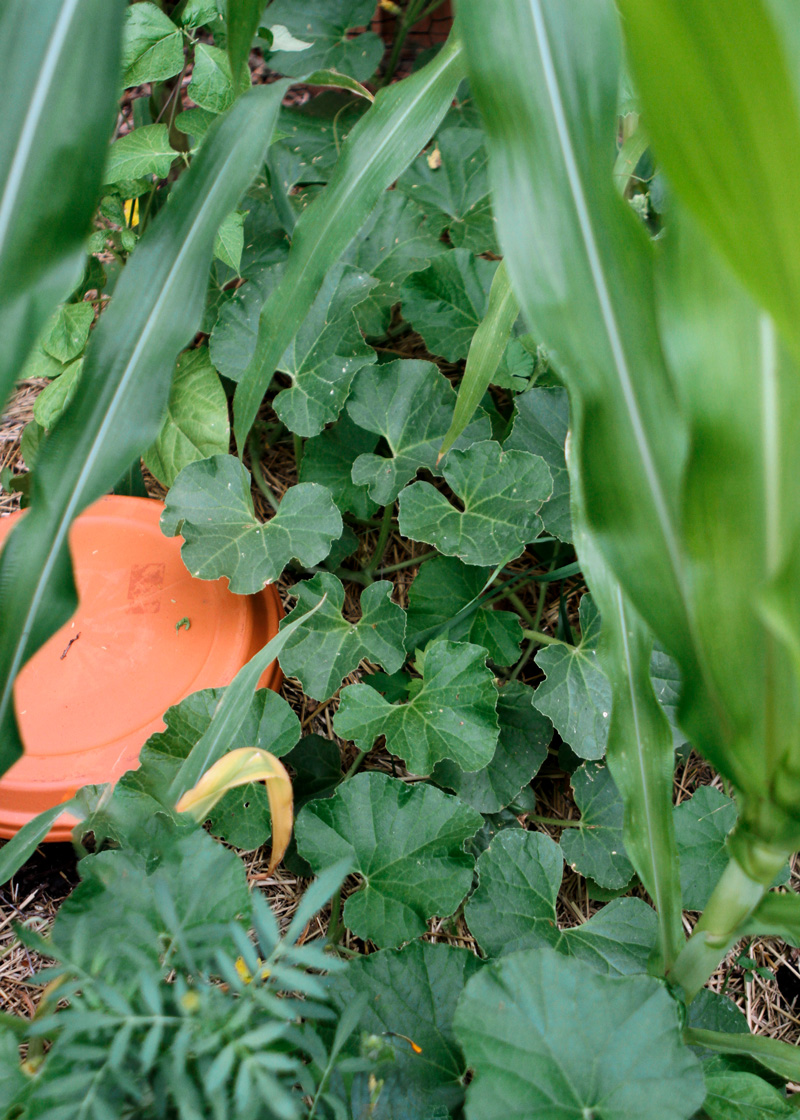
spreading melon/squash
NUTRITION
The three plants are also a nutrition powerhouse when combined. Corn contains carbohydrates that provide a rich source of energy. Corn and beans together create a complete protein. Beans contain fiber to help balance the release of sugar into the bloodstream, keeping us fuller for longer. Squash is full of vitamins and minerals that both corn and beans lack.
Fourth Sisters
Sunflowers
If sunflowers are incorporated as a fourth sister it is recommended that they are planted along the northern edge of a garden, as not to shade the crops. Also keep in mind beans and sunflowers do not grow well together.
Amaranth
Amaranth (pig weeds) can be planted between the rows of corn at the same time. The seed of the plant is rich in gluten-free protein, calcium, vitamins, and other essential building blocks. Besides attracting pollinators, amaranth is great at providing shade during the hottest part of the season. Their strong stalks are also excellent for beans to climb on.
Other sisters could be bee balm, nasturtiums, and basil that provide their own benefits including attracting pollinators.
Companion planting is a great way to promote crop productivity by harnessing natural synergies in the environment. This strategy promotes healthier ecosystems by reducing the need for synthetic fertilizers and pesticides.
By planting a three sisters garden we can honor the ancient farmers of Mesoamerica.
PIN ME
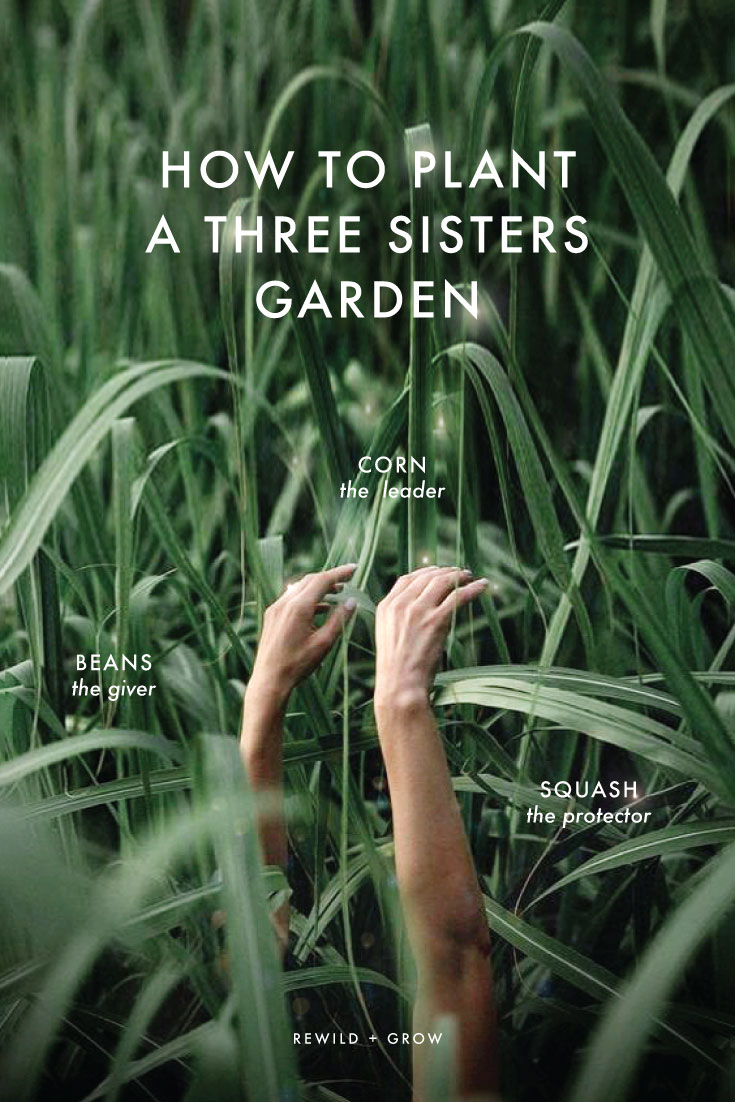
SOURCES
• The Farmer’s Almanac
• Biodynamic Gardening by DK
• The “How” of the Three Sisters: The Origins of Agriculture in Mesoamerica and the Human Niche by Amanda J. Landon
• Long Live the Three Sisters by Diana Erney
• Returning the ‘three sisters’ – corn, beans and squash – to Native American farms nourishes people, land and cultures by Christina Gish Hill
exit the matrix.


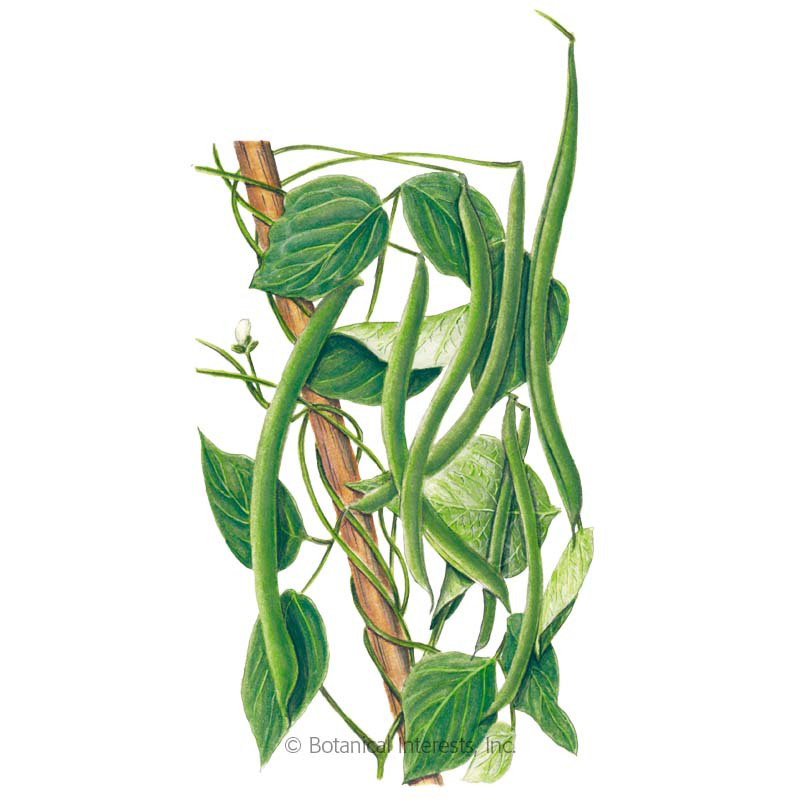







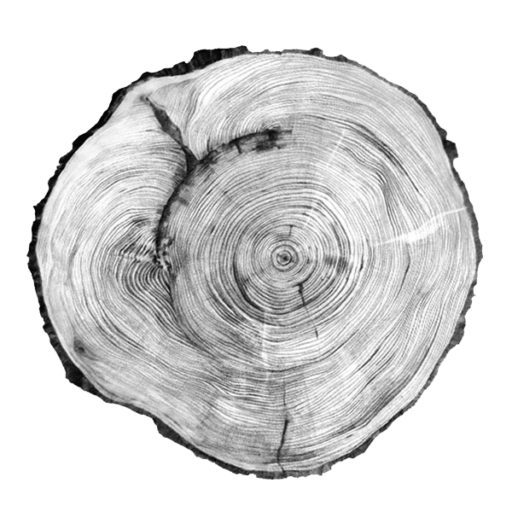
0 Comments